Remembering the May 4, 1970, shootings at Kent State University
Most people know violent student protests at Kent State University in 1970 led to the Ohio National Guard being called to campus where they fired on students for 13 seconds.
There’s much more to the story.
Below you will find the Beacon Journal’s coverage of the 50th anniversary of the Ohio National Guard shooting deaths of Kent State students on May 4, 1970.
Photos: Remembering the May 4, 1970, shootings at Kent State University
The coverage vividly retells the story of what happened and how it continues to impact life today.
The following seven-part series relives the days leading up to the May 4, 1970, shootings at Kent State University, through the lives of some of those most affected.
What happened in 1970?
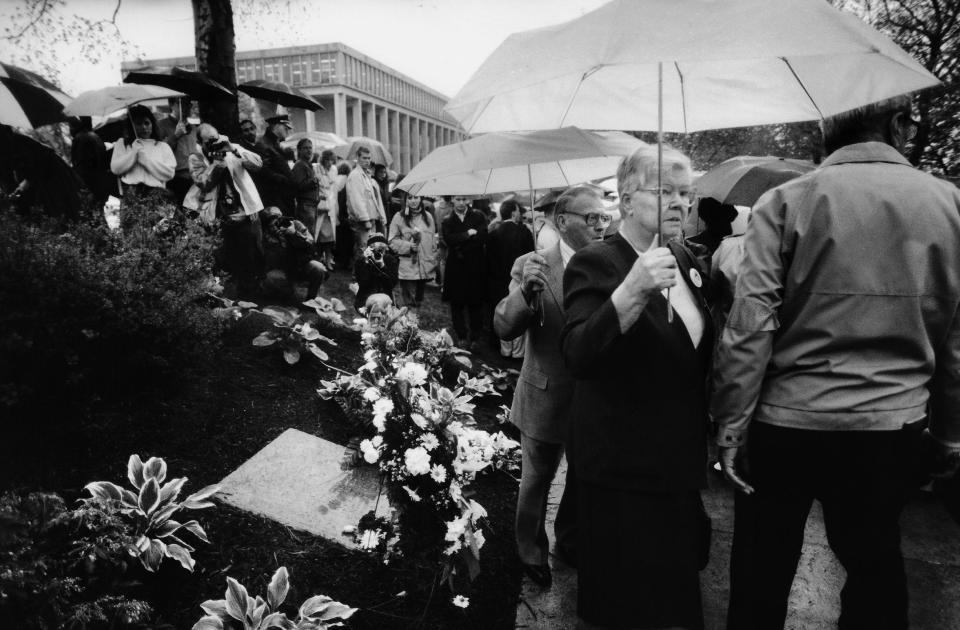
Part 1: April 29
William Schroeder told a Kent State classmate he was 'scared' of the unrest. Two days later, he was dead.
During his senior year in high school, Bill Schroeder applied for, and received, a full four-year Army ROTC scholarship. He had never been a protester during the long, contentious years of the Vietnam War. On May 3, he called his parents to reassure them he wasn't participating in any of the unrest, and that he was upset that demonstrators had burned the ROTC building. On May 4, he was shot and killed by the National Guard. Read the story.
***
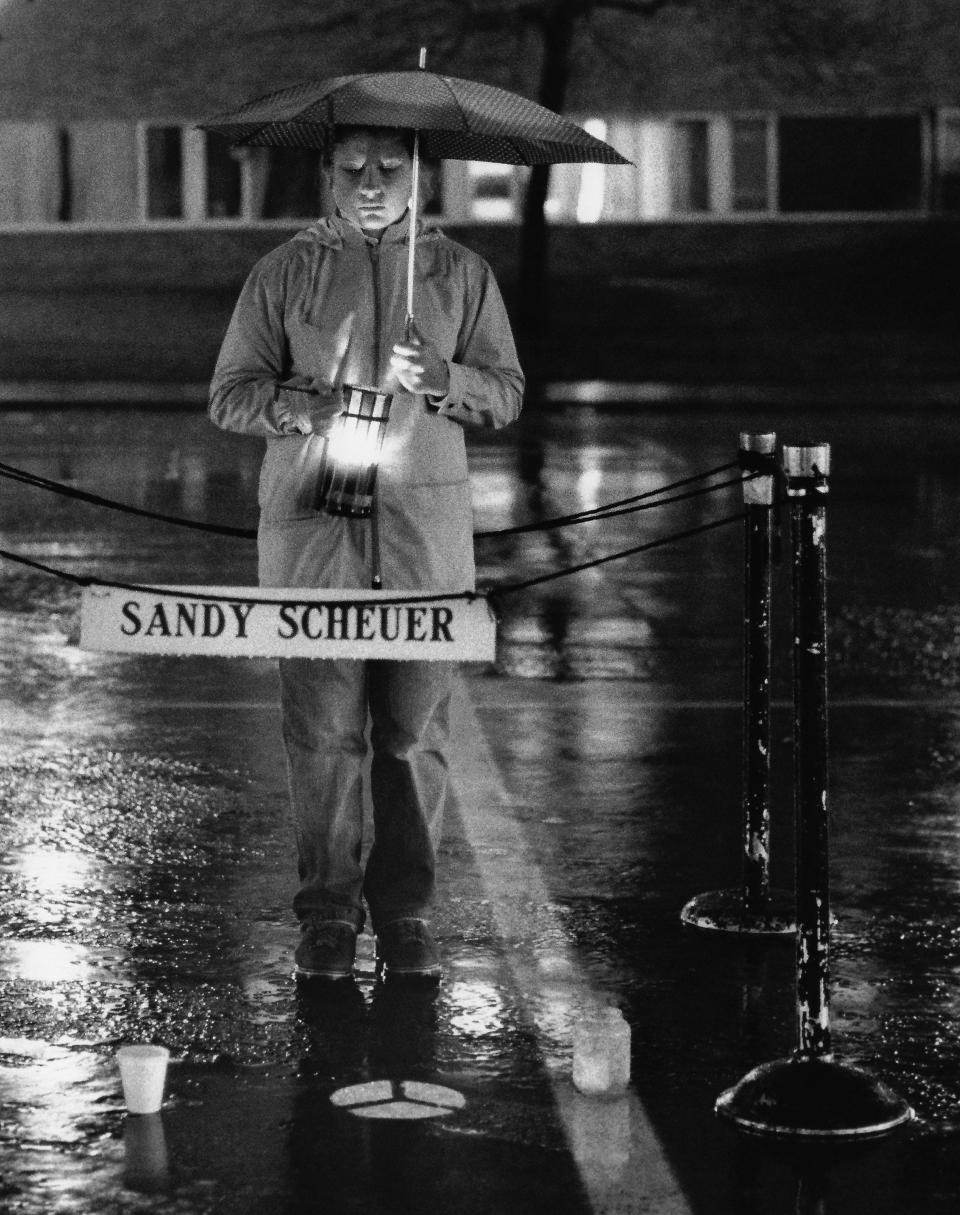
Part 2: April 30
Sandy Scheuer studied to help stroke victims find their voices. The Kent State shootings took hers
Sandy Scheuer thought it was senseless to send young men to die on the other side of the world. But she mostly kept those thoughts to herself. She declined invitations from friends to participate in or watch demonstrations or marches on campus. No, her whole life was about finding the positive. She loved to laugh, her thick, black hair bouncing with the effort. She loved to make others laugh, too, often breaking out into goofy actions. Read the story.
***
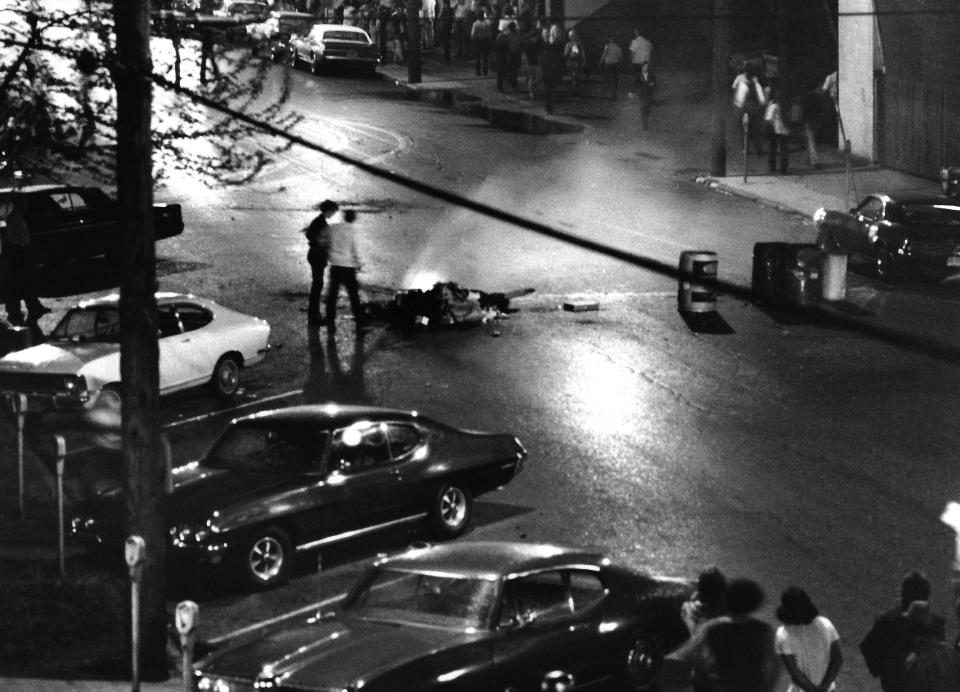
Part 3: May 1
Making the call: Why Kent's mayor asked the governor to send the National Guard to Kent State
Warm weather brought out the crowd after President Richard Nixon announced the Vietnam War was expanding into Cambodia. Though the evening started peacefully, the crowd's mood changed shortly before midnight. Kent's police force had never dealt with anything like this, so the decision was made to ask the National Guard to be on standby. Read the story.
***
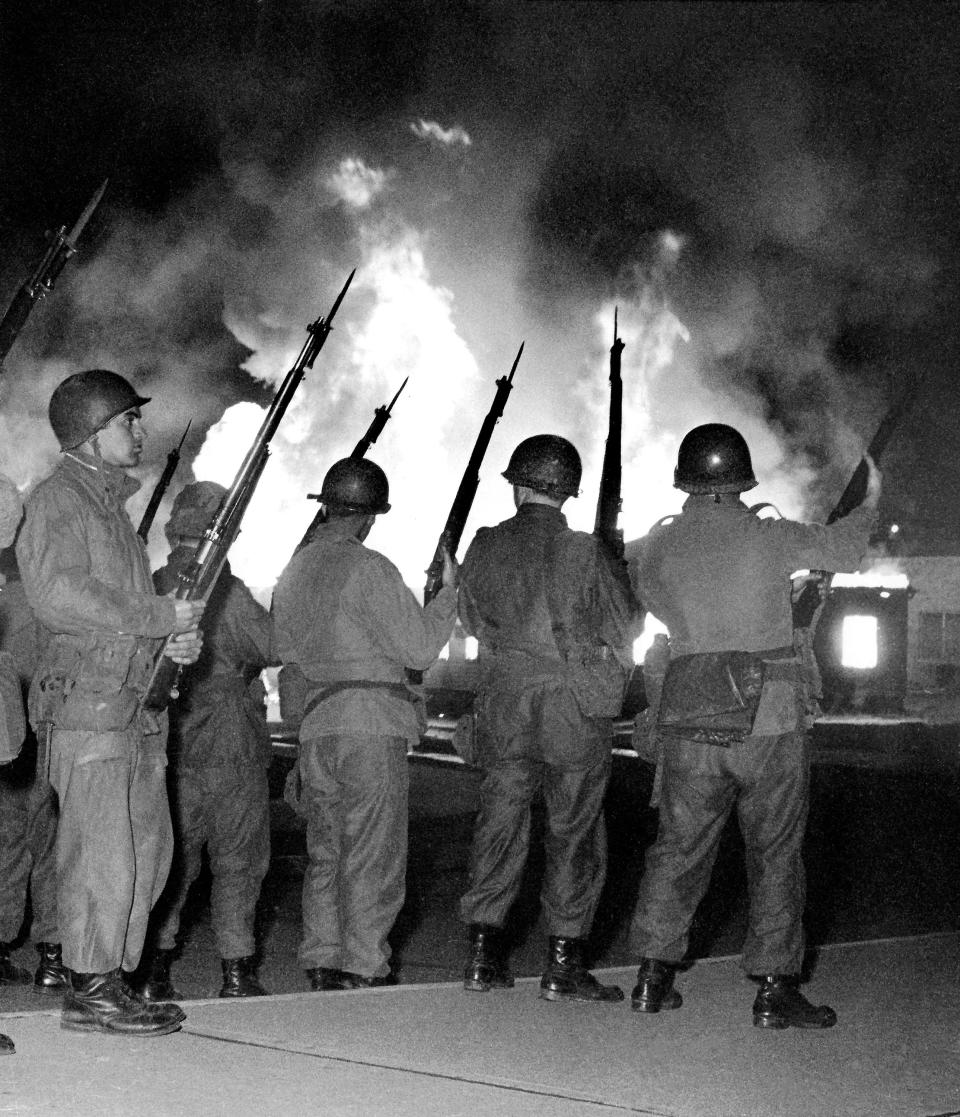
Part 4: May 2
Warning, flames greeted National Guard ahead of Kent State shootings
A few hundred students gathered at the Commons to hear speeches and chant anti-war slogans. The rally turned into a march, growing in size as it passed by the dormitories. More than a thousand people had joined in by the time the demonstrators reached the ROTC building. After the demonstrators surrounded the building, several people made repeated attempts to set the structure on fire, each effort failing. But one attempt succeeded. Read the story.
***
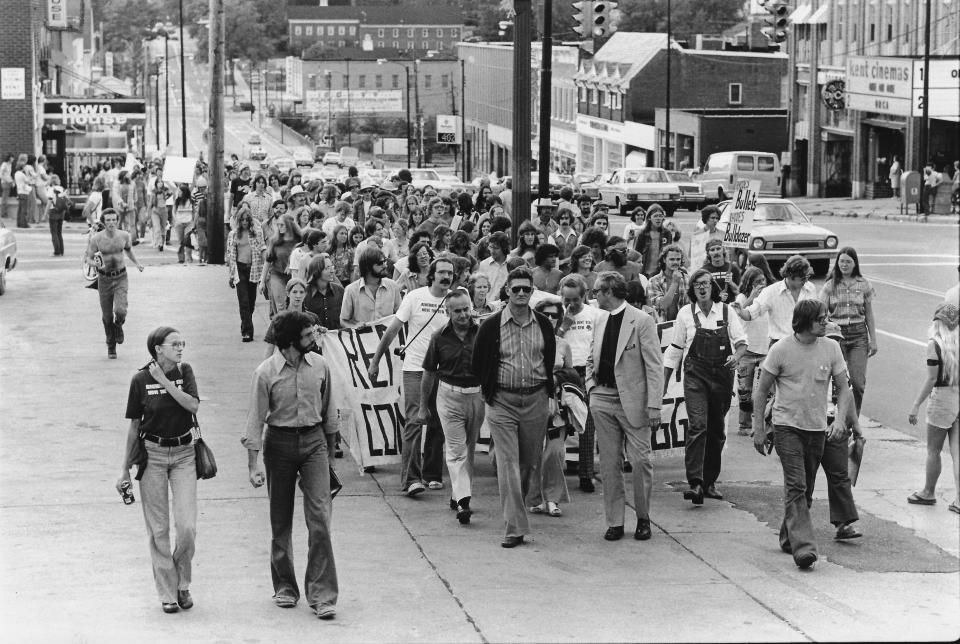
Part 5: May 3
Allison Krause told guardsmen at Kent State 'Flowers are better than bullets!' Then a bullet killed her.
Allison Krause and her boyfriend Barry Levine set off to talk to some of these guards who had taken over their campus. They found one standing alone, a lilac sprouting from his gun barrel, placed there by another student. While talking a superior officer berated the guardsman for the "silly flower" in his rifle muzzle and took it. As the officer turned to leave, Allison snatched the flower from his hand. "What's the matter with peace?" she called after him as he turned and walked away. "Flowers are better than bullets!" Read the story.
***
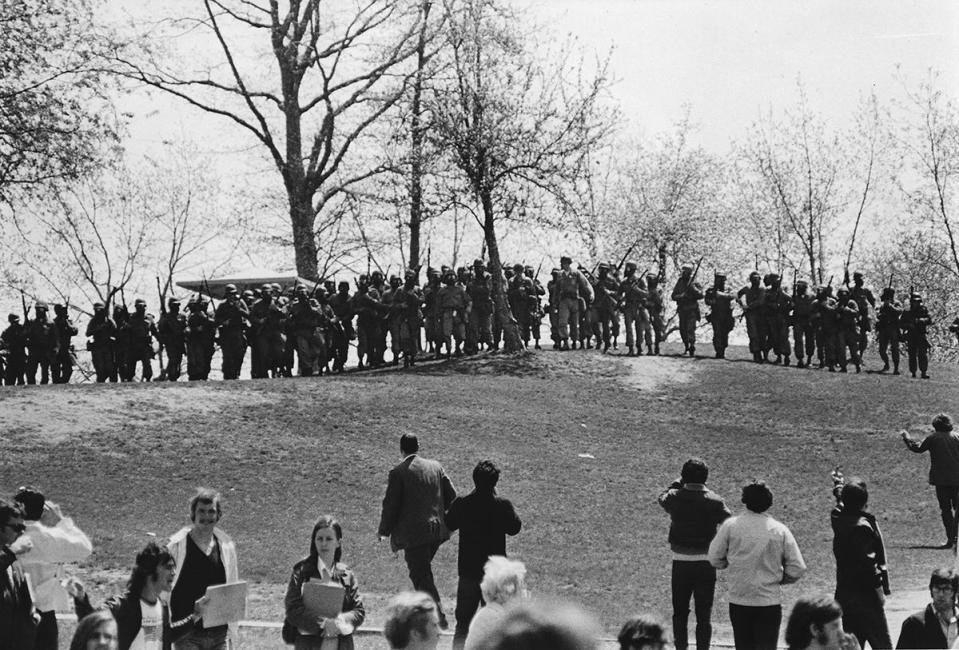
Part 6: May 4
Jeffrey Miller despised violence. He died in a hail of gunfire
Jeff Miller abhorred violence, at times even criticizing anti-war demonstrators who went too far. But he needed to express his deep opposition to the war in Vietnam. The least he could do, he told a friend, was to be another body at rallies, marches and sit-ins. His weapons were his voice, his defiance and, on occasion, his middle finger. Read the story.
***
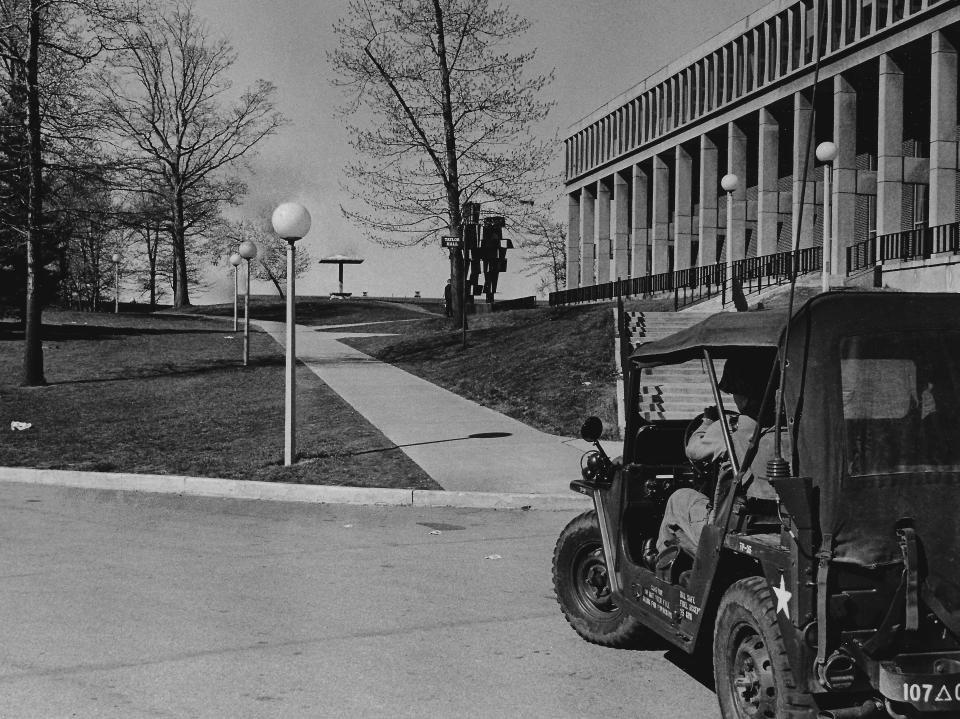
Part 7: May 5
The world watches investigation after Kent State shootings
In a volley that had lasted 13 seconds, four unarmed students were killed, and nine were wounded. Now it was time to trace each of the 67 rounds that were fired. Who shot it? What did it strike? Why was it fired at all? Read the story.
Lasting impact of National Guard shootings
Our 50th anniversary coverage included companion series of stories examining the impact of May 4 on a wide range of important topics such as support for the Vietnam War. We’ve also profiled four of the nine survivors.

Inquire, Learn, Reflect: How Kent State endured the 1970 shootings to embrace its tragic past
In the half-century since the shootings, Kent State has evolved from distancing itself from this defining moment for the university, to focusing on it and ultimately embracing it fully. Read the story.
***
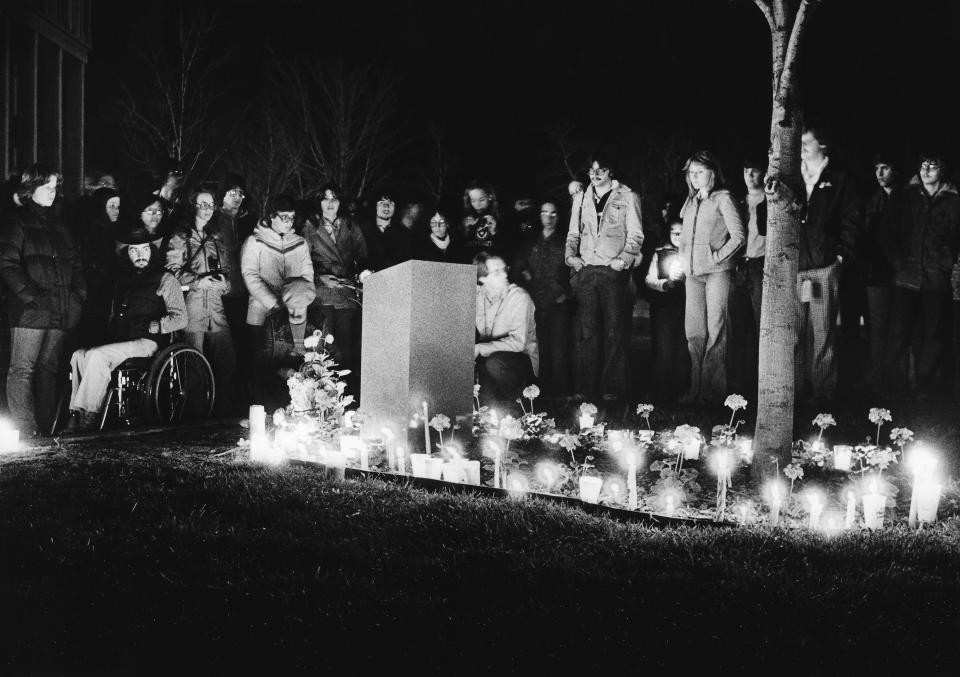
Kent State shootings on May 4, 1970, still shape Ohio colleges 50 years later
While the short-term effects of May 4 were clear, there were long-term effects for Ohio universities and for the students who populated them. It changed the way universities and their communities interacted. It prompted changes in state law regarding campus protests and violence. Some universities enacted more controls on events. And the shootings spurred people to action. Read the story.
***
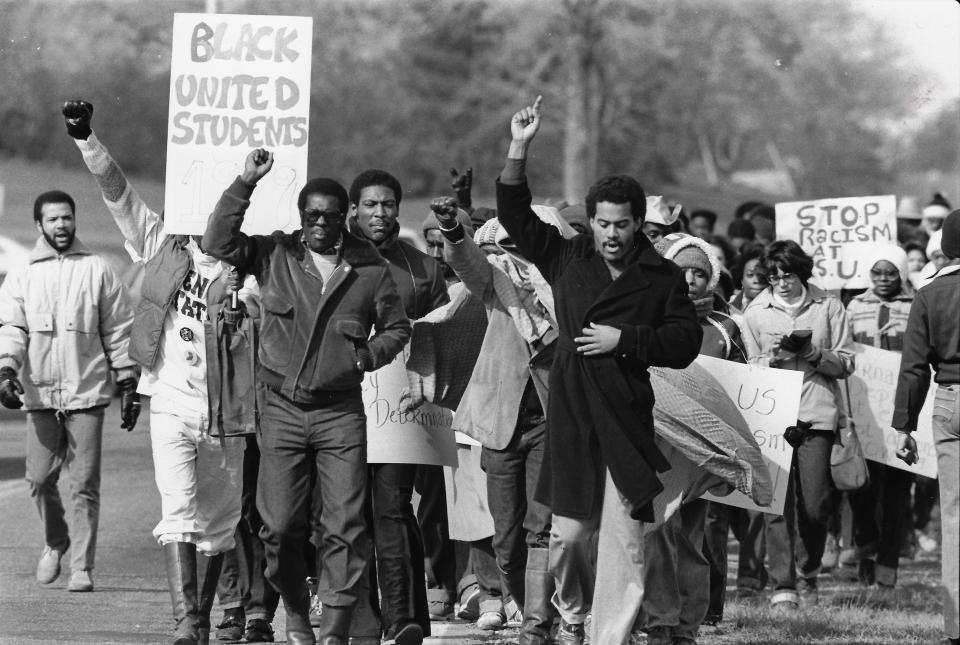
How the Kent State shootings divided a city and changed it forever
The May 4, 1970, Kent State shootings shaped the city of Kent for decades to come. In the immediate aftermath of the shootings, most people in the city supported either the students or the National Guard. Those two perspectives shaped the city’s politics. Read the story.
***
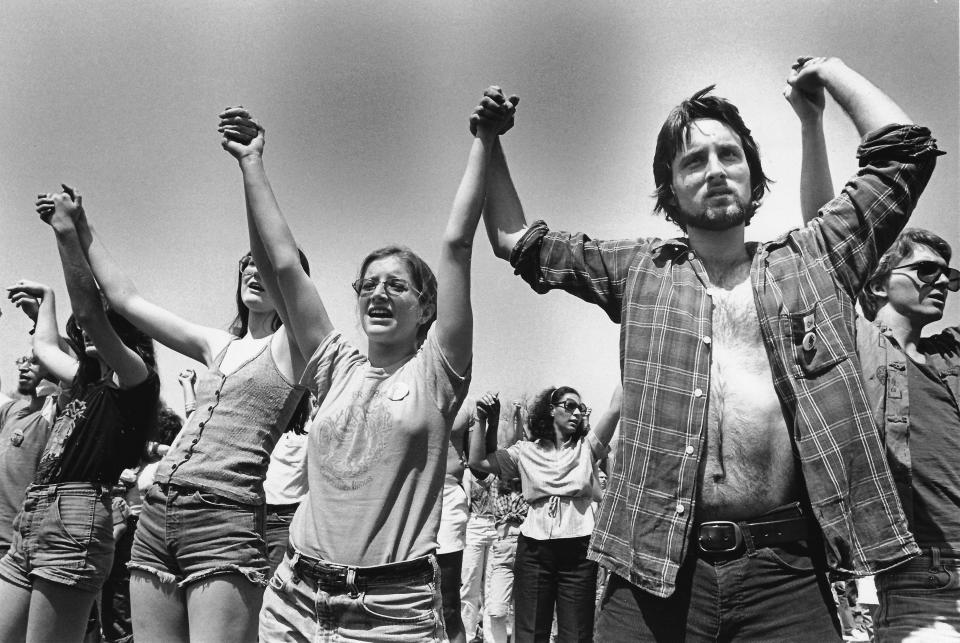
Survivor continued activism, saw healing on campus 50 years later
Alan Canfora, one of the nine wounded, was an expert on the Kent State shootings whose mission was to educate and bring to light what happened that day. “I’ve just found it impossible to ignore this injustice, especially as long as there’s been Kent State students, faculty members and others who were joining in the fight for truth and justice for Kent State.’’ (Note: Canfora died in December 2020.) Read the story.
***
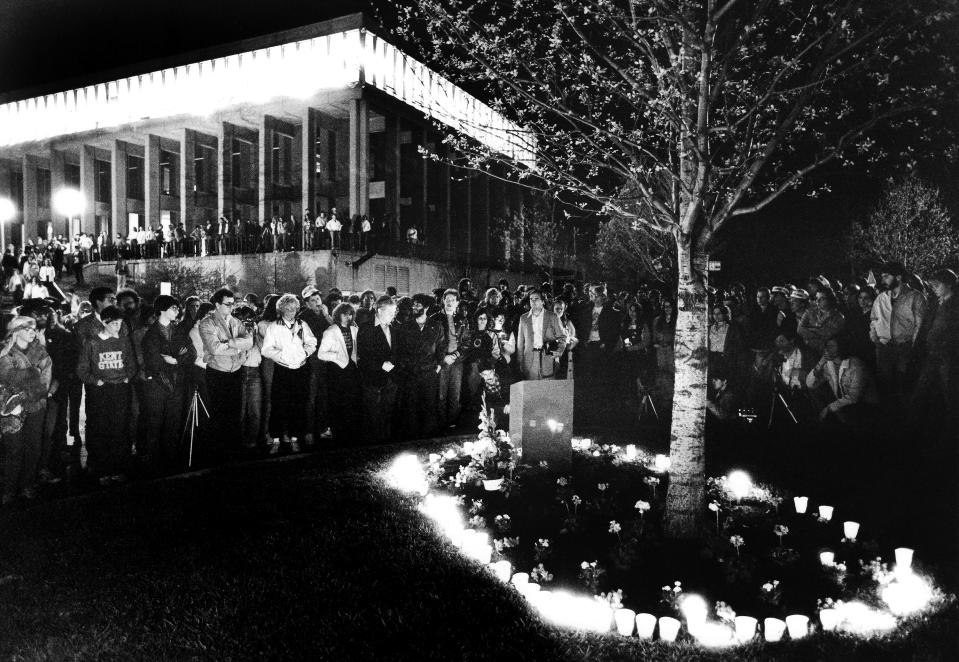
Joe Lewis reflects on massacre 50 years later
Joe Lewis said he’s missed only one May 4 commemoration in the past 25 years. “For me it’s a very bittersweet time because it brings back horrible memories of pain and suffering for not just me, but for everyone who was there,” he said. Read the story.
***
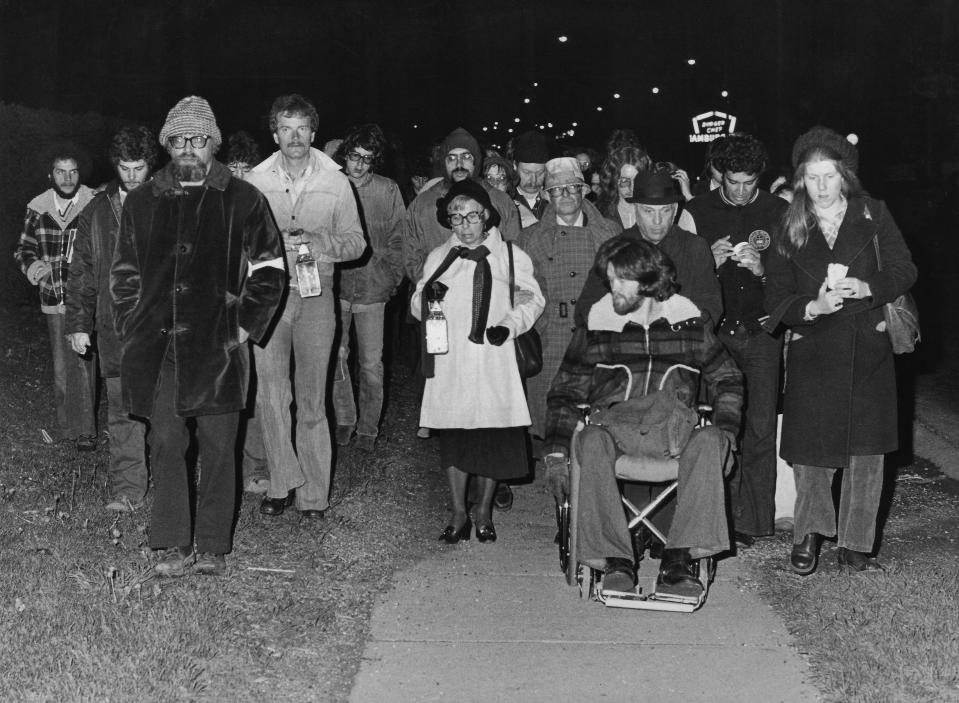
Paralyzed survivor Dean Kahler harbors no anger
Dean Kahler walked onto the campus full of hopes and dreams. He left some years later, degree in hand in a wheelchair and with a new path in life. Read the story.
***
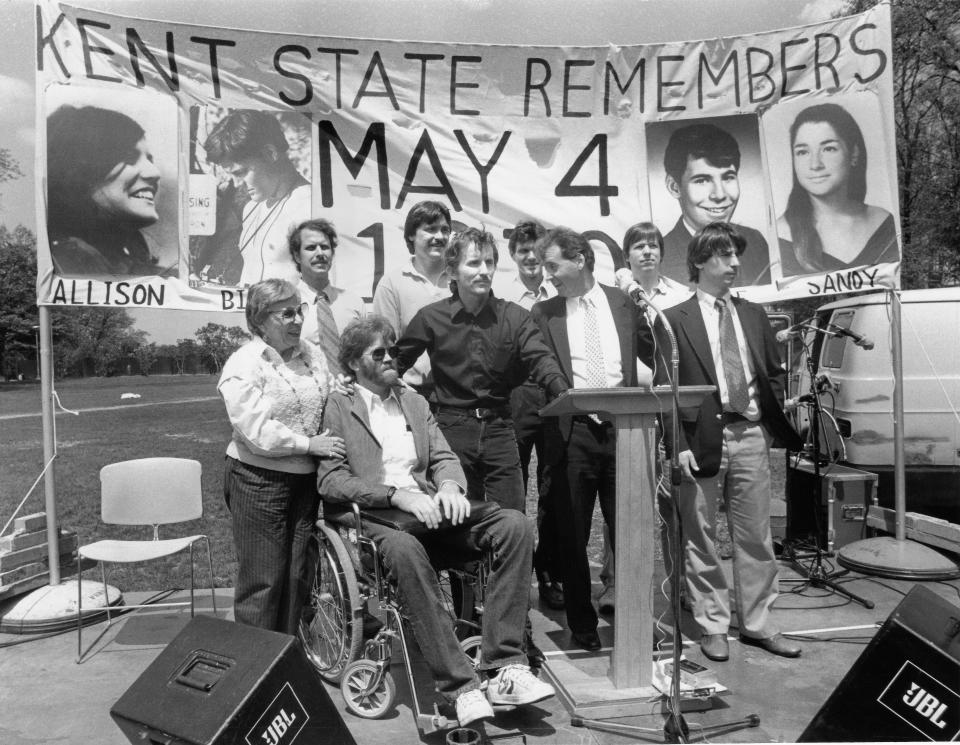
Survivor has spent 50 years studying student activism
Tom Grace, a wounded survivor of the Kent State shootings, told his story of May 4 so many times that he was ready to move on to the bigger picture — exploring the origins of the student protest movement at Kent State. “It’s a subject to which I’ve directed scholarly energy for a long time,” Grace said of the shootings and student activism that came before. “I’m far more interested in telling the larger stories. After going through this [telling his story] for five decades, to a certain extent you get talked out.” Read the story.
***
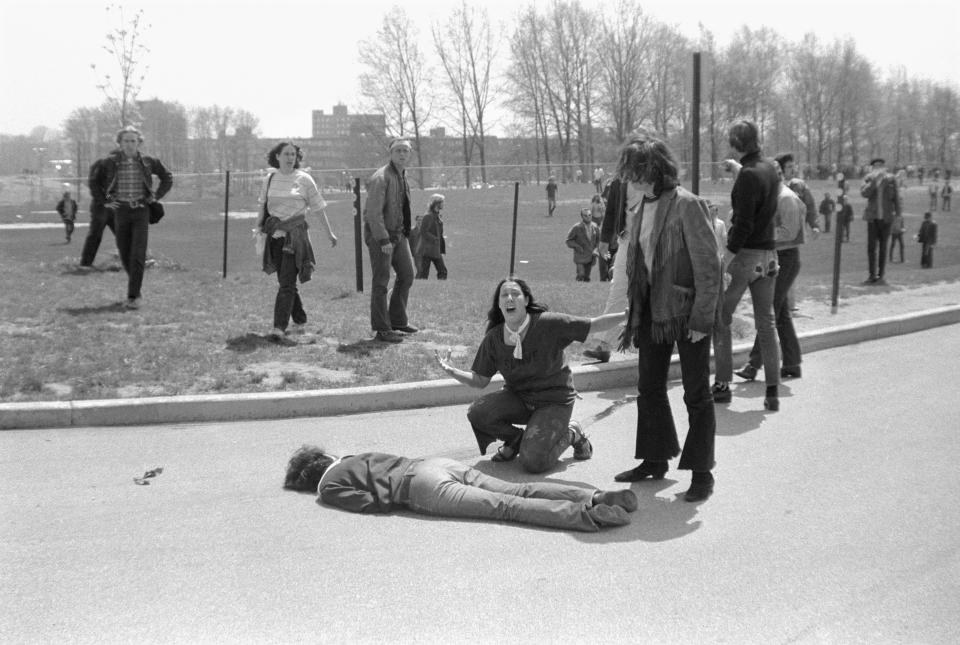
Iconic image stokes anti-war sentiment across US
Nothing brought the Vietnam War home more dramatically than a photograph taken that day by a Kent State photojournalism major -- young Mary Ann Vecchio kneeling next to the dead body of student Jeffrey Miller, her hands turned upward in despair, a look of horror on her face. It was the face that launched a thousand protests. Read the story.
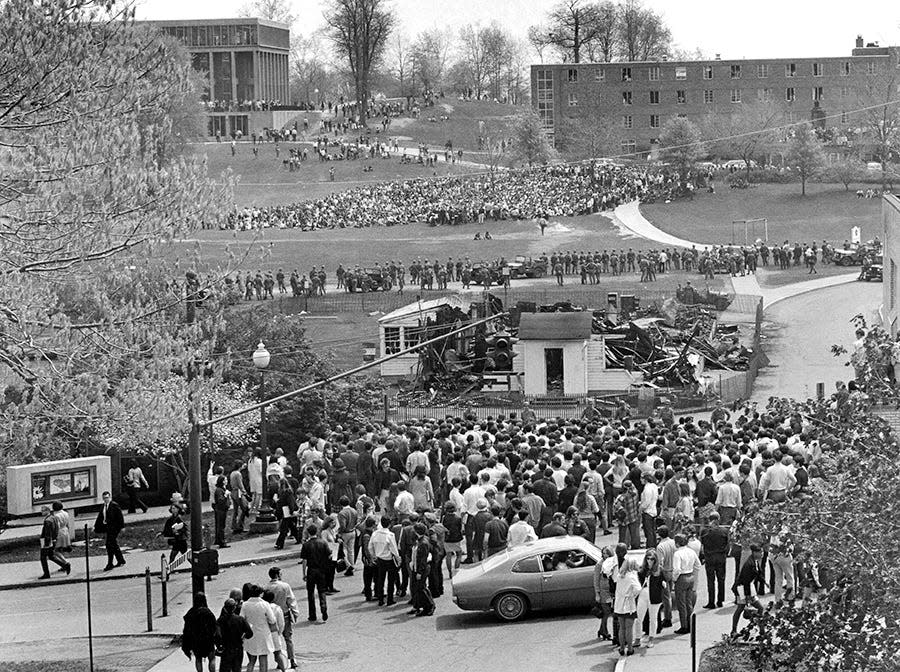
See how May 4, 1970, events played out with interactive story
After a morning of confusing and contradictory meetings at Kent State, Ohio National Guard Gen. Robert Canterbury took matters into his own hands before noon on May 4, 1970. Read the story.
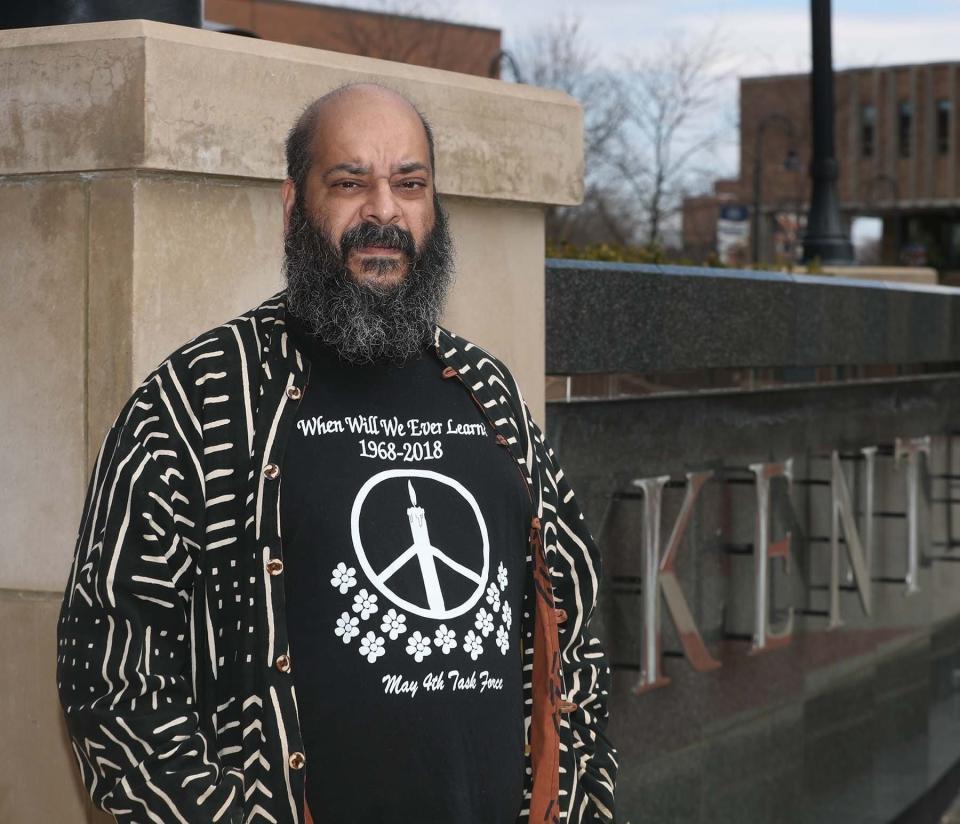
How events of May 4, 1970, influence student activism today
It was 50 years ago, but at Kent State, May 4 is a looming presence. The reminders, from memorial markers to bullet holes, are everywhere. But activism is still strong at Kent State, and for those who have picked up the baton — leading campus protests and letter-writing campaigns or fighting the university administration for more mental health support for students — May 4 serves as both a motivation and a stark reminder of what can happen when students speak out. They raise their voices anyway. Read the story.
***
Local history: Retired KSU nurse recalls May 4
Eleanor McMillen thought she had seen it all at the DeWeese Health Center at Kent State University. The 40-year-old nurse had spent the past three years caring for ailing students, handling such routine cases as broken bones, sprains, bruises, scrapes, cuts, colds, allergies, stomachaches, earaches and headaches. She once even pulled a cockroach out of a student’s ear. But then came May 4, 1970. Read the story.
May 4, 1970, in photos
Photos: Kent State May 4 shootings - Confrontation turns into national tragedy
Photos: Kent State shootings - From a normal school to an inferno of protests
Kent State shootings: 50 years of remembering the tragic day
This article originally appeared on Akron Beacon Journal: Looking back at May 4, 1970: National Guard shootings at Kent State
